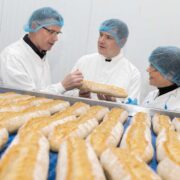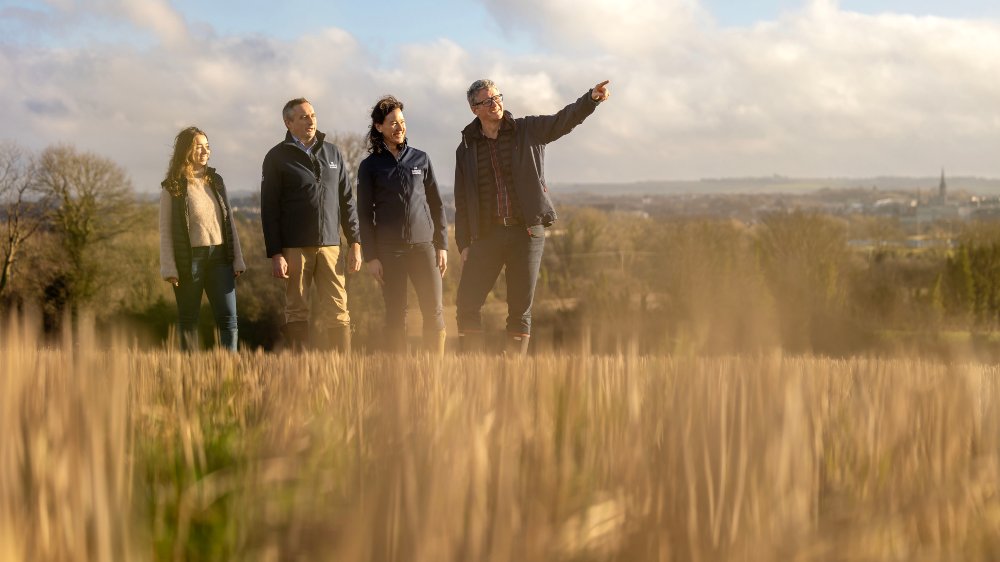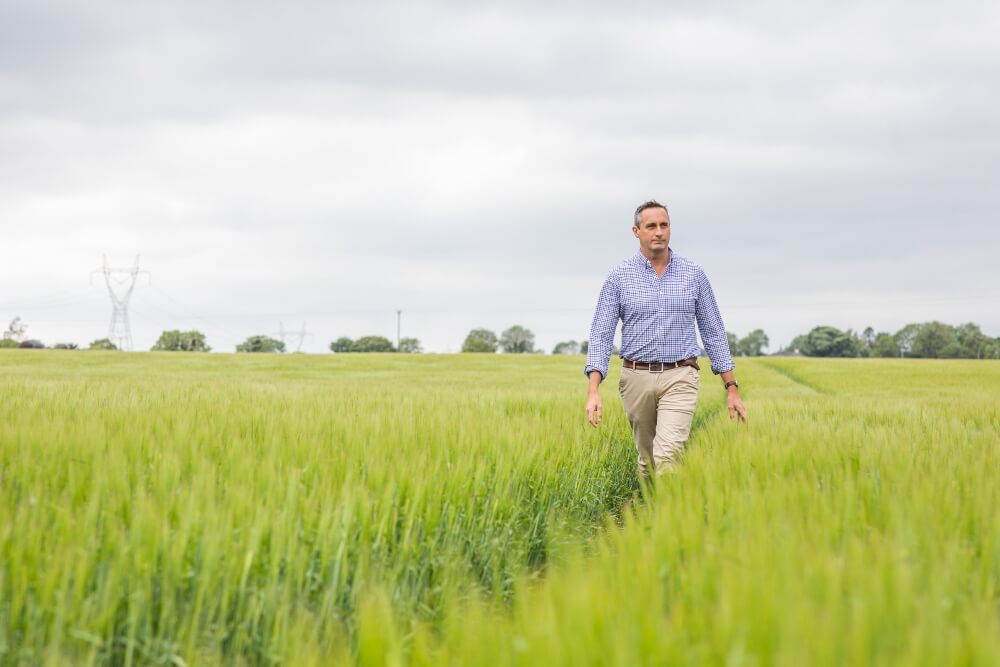Podcast Ep 277: At the Ploughing Championships 2025, Bank of Ireland’s agri development managers shared their thoughts on what the future holds for farming in Ireland.
Irish farmers are heading for their most profitable year in decades, with average farm incomes forecast to surge 39% to €48,500 in 2025 as global food shortages drive commodity prices to record highs.
The income boost reflects a broader transformation in Irish agriculture, with farmers funding growth through cashflow rather than borrowing while simultaneously paying down debt to reach 25-year lows.
“Sustainability underpins everything for farmers and every decision they make now on the farm. And it’s not just policy driven”
According to his latest H2 Insights report, Eoin Lowry, head of Agri sector at Bank of Ireland, said livestock sectors were experiencing unprecedented price increases. Cattle prices have risen 43% and calf prices have nearly doubled with a 95% increase since June 2024, while milk prices have risen 12% over the same period.
“Irish agriculture entered 2025 on a firm footing,” said Lowry. “Since January, favourable weather conditions have continued and driven solid farm output in terms of grass growth, crop yields and animal performance.”
The surge reflects broader global trends, with the FAO Food Price Index reaching its highest level in two and a half years in July. Global meat prices achieved an all-time high, driven by tight supplies of cattle and sheep combined with robust international demand.
Total farm debt now stands at €2.65 billion as of March 2025, the lowest level in over 25 years. Overdraft utilisation has dropped 25% compared to the first half of 2024, while farm deposits are projected to reach record levels by year-end.
Regional variations emerge
Bank of Ireland’s agriculture development managers (ADMs), who work directly with farmers across the country, report significant regional variations in the current boom. Susan Maher, who covers the southeast including Kilkenny, Carlow and Wexford, said livestock farmers were benefiting most from the favourable conditions.
“2025 has been a great year for our livestock farmers, and it’s been the weather. The weather has played ball this year for livestock and for dairy farmers, the prices have stayed really strong for beef and for milk,” Maher said. “The tillage farmer hasn’t been so lucky. So while they’ve had good yields and they’ve had really good weather, their costs are a challenge, and the price they’re getting is a real challenge for them.”
Mark Glennon, whose territory spans North Leinster, Connacht and Ulster, confirmed the pattern. “The tillage sector is quite prominent in the North East, and it’s probably the sector having a much more difficult year,” he said. “Grain prices are looking a little bit more positive in the last couple of weeks. The beef sector, particularly in the West of the country, is having a really good year, probably the best year we’ve seen in a long time.”
John Fitzgerald, covering the dairy heartland of Cork and Waterford, described the transformation since EU milk quotas were abolished a decade ago. “The dairy industry has grown by 40% and our business has grown exponentially as well in that region,” he said. “Right here and now, we’re looking at supporting farmers in terms of buying land. There’s a lot going on in that area at the moment.”
Sustainability drives investment
The current prosperity is enabling significant investment in sustainability measures, with farmers increasingly focused on reducing their environmental footprint. Pat Byrnes, who covers North Munster including North Tipperary, Limerick, Kerry and Clare, said sustainability underpins every decision farmers make.
“Sustainability underpins everything for farmers and every decision they make now on the farm. And it’s not just policy driven. Farmers are very much on that journey, and they want to be part of it, and they’re very invested in it,” Byrnes said.
Bank of Ireland has responded with its EnviroFlex lending programme, offering discounted rates to farmers participating in co-operative sustainability schemes. “Every farmer who is part of their co-op sustainability scheme within their co-op can avail of sustainability linked funding,” said Maher. “99.9% of dairy farmers are part of that program.”
Glennon noted farmers were embracing multiple environmental initiatives: “They’ve moved towards protected urea as a fertiliser, a lot of farmers have embraced low emission slurry spreading. They’re continuously working on improving the genetic merits of their herd, which ultimately improves production efficiency.”
Structural challenges persist
Despite the current boom, longer-term structural issues remain. The average age of Irish farmers is approximately 59 years, creating succession challenges, while labour availability continues to constrain growth.
“Labor is a challenge in the sector,” said Glennon. “Anything a farmer can do, particularly in that cash surplus, to make their life easier through automation and labor saving technologies is an area that they’re really looking at.”
Volatility also remains a constant concern. Ireland exports 90% of its agricultural produce, making the sector highly exposed to global trade developments and commodity price swings.
“We’re very exposed to what’s going on outside of Ireland in terms of different trade tariffs, and what’s going on in terms of demand and supply of commodities right across the world,” said Fitzgerald. “It’s a cyclical business, and it’s volatile, so it goes up and down, and farmers are used to that volatility now.”
The banks take a longer-term view when assessing farm lending. “We don’t lend to any farmer based on one given year. We do it over three to four years, and we take a longer term view,” said Maher. “One bad year, while it can have short term impacts on farm and on cash flow, in the long term, they’re optimistic, we’re optimistic.”
As farmers gather at the National Ploughing Championships, the mood is notably upbeat. “There’s a vibrancy around Ploughing this year that we haven’t seen in a while,” said Fitzgerald. “Farmers are, after a good year, coming to Ploughing, they have money to spend, and they’re looking at what opportunities are there.”
-
Bank of Ireland is welcoming new customers every day – funding investments, working capital and expansions across multiple sectors. To learn more, click here
-
For support in challenging times, click here
-
Listen to the ThinkBusiness Podcast for business insights and inspiration. All episodes are here. You can also listen to the Podcast on:
-
Spotify
-
SoundCloud
-
Apple





